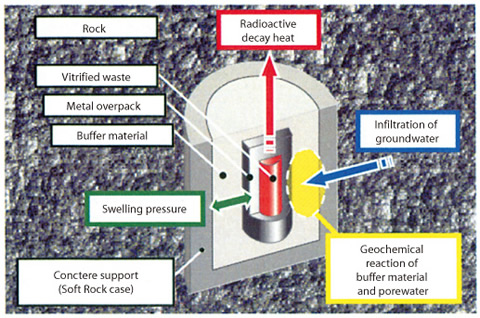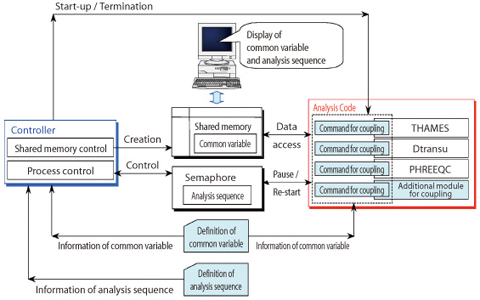
Fig.2-8 Schematic view of T-H-M-C behavior

Fig.2-9 Outline of the coupled T-H-M-C code
Fig.2-10 Example result of analysis by developed code
Near a high-level radioactive waste repository after emplacement of engineered barriers, coupled thermo-, hydro-, mechanical, and chemical (T-H-M-C) processes will occur, involving interaction among radioactive decay heat from the vitrified waste, infiltration of groundwater into bentonite, swelling pressure of bentonite due to saturation and chemical reaction between bentonite and pore water (Fig. 2-8). It is very important to predict these phenomena quantitatively in order to improve reliability in assessing the long term performance of engineered barriers. For this objective, we have developed a coupled thermo-, hydro-, mechanical, and chemical (T-H-M-C) analysis model / code. To realize the T-H-M-C analysis system, we combined the three existing codes (i.e. the coupled T-H-M code "THAMES", mass transport code "Dtransu", and geochemical code "PHREEQC") in a program which can control execution of each analysis code and can exchange data among each (Fig.2-9). This system is very effective to improve efficiency and quality of code development.
JAEA has participated in the international co-operative project (DECOVALEX) to improve the understanding of the coupled T-H-M-C processes and to validate the code we developed. In this project, we performed calculations for the in-situ test at Yucca Mountain in U.S.A., using our code (Fig. 2-10). This code makes it possible to predict quantitative changes over time and space, not only of the engineered barrier system but also near the drift. We will be incorporating new findings and precision models in the current coupled model, attempting to advance our model further and achieve realistic prediction.